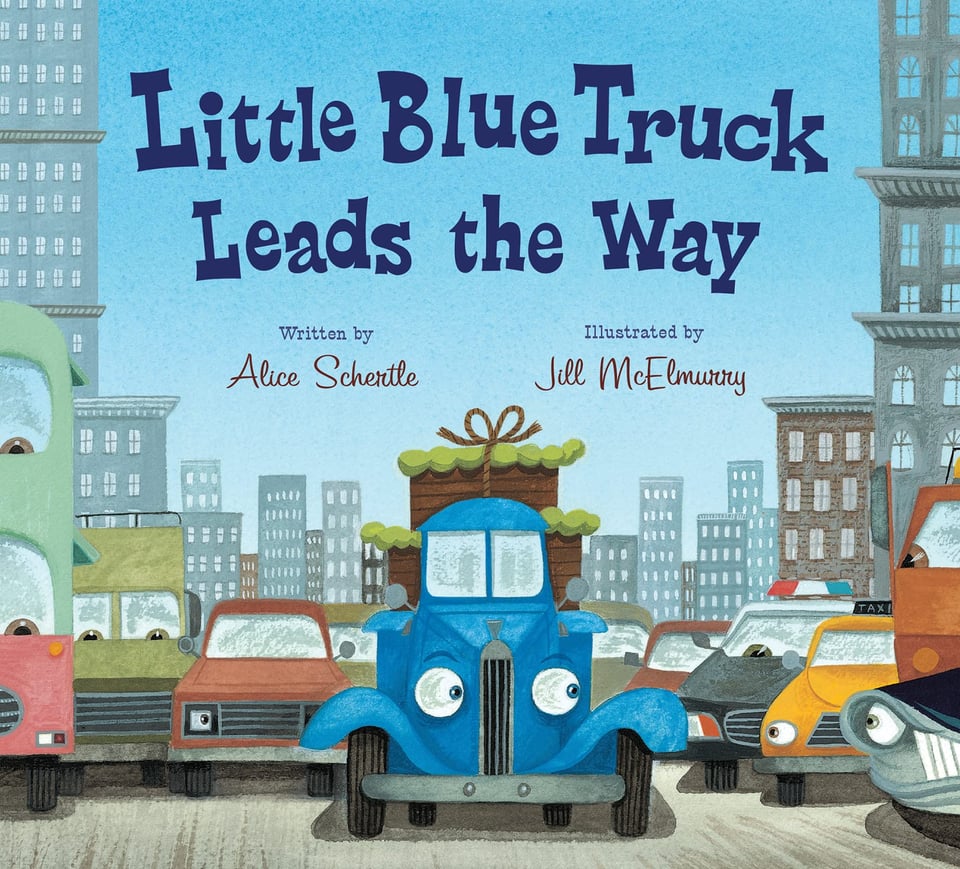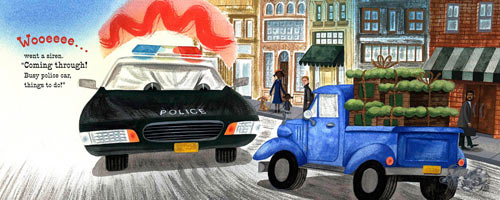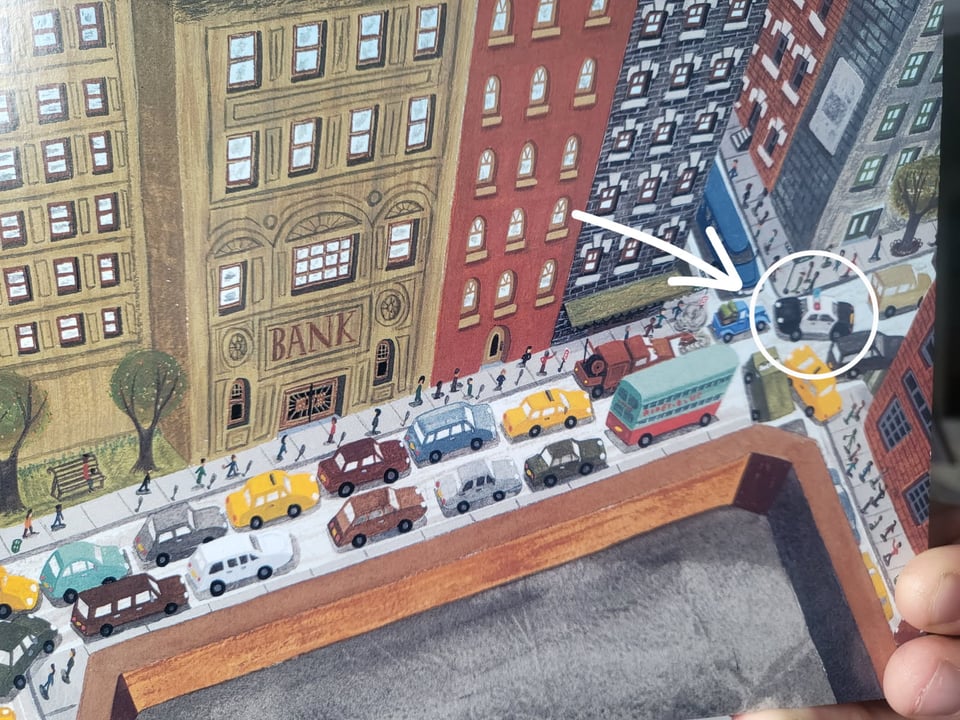Beep-beep-beep, isn't it pretty?
(A quick note: today’s newsletter starts out a bit bleak so skip to the next section below the divider if you’re all filled up on the news for today and would like some whimsical [if topical] commentary on children’s books.)
Hello again—
It’s one of those weeks where everything feels bad and scary for reasons that, if you’re here, you probably already know. ICE raids in LA; largely peaceful protests being used as an excuse for sending in the National Guard and also a bunch of Marines (who can apparently arrest people now?).1
My friend Alex Steed, a podcaster and photographer and zine-maker (who also did my author photos!) has been documenting some of what’s been going on in Downtown LA and suffice to say that it’s truly so visibly clear how much of what’s going on is being stoked by ICE and the police. It’s infuriating, it’s frustrating, and it’s terrifying.
There’s a lot else I could say, but that’s not what this missive is about. I’ll just drop a couple more links here on how you can support even if you can’t attend a protest.
This newsletter was meant to be, as I said in my last one, about The Left Hands of Darkness by Ursula K. Le Guin, or rather, about how and why I was reading and rereading and rereading it. But instead, it’s going to be about Little Blue Truck Leads The Way, one of the seemingly endless series of books about this little blue truck dude and his lover good friend Toad.

It’s somewhat of an anomaly in the Little Blue Truck series, written by Alice Schertle and illustrated by Jill McElmurry2, for a few reasons:
It features humans (as opposed to the usual farm animal cast).
It takes place in a city (as opposed to an idyllic countryside).
Toad is notoriously absent from it3.
The plot is simple: Little Blue goes into the city (“beep-beep-beep, isn’t it pretty?”) and is quickly overwhelmed by the pace of the traffic. Various vehicles cut him off: a bus, a taxi, a delivery van, a cop car, and a limousine (“the longest car you’ve ever seen”). Little Blue understands that everyone is impatient and that he’s slow (one gets the sense that Little Blue is very much an old pickup truck, judging by the design) but begs his fellow sentient vehicles to go one at a time.
The limo, self-importantly ferrying the mayor across town, suffers a sudden engine death at this point, and traffic snarls up worse than ever. The mayor comes out of it and climbs onto the bed of our protagonist, gives a speech about how Little Blue is right, everyone should go single file, slow and steady, and initiates an impromptu parade that gives the book its title. Fin.
Like nearly every children’s book I read to my kiddo, this one raises a lot of questions. Why is Little Blue in the city in the first place? Why isn’t Toad with him? Who is paying for the mayor to take a fancy stretch limo? Why are there humans in this book and sentient cars, and is this series related at all to the Cars Cinematic Universe?
I don’t have answers to any of that, and while I’d love to speculate, that would end up becoming fanfiction, and I don’t think I’m ready to be the kind of parent who gets an AO3 account just to process all the (reasonable! age-appropriate! generically sound!) plot holes in their child’s books.
Instead, I want to focus on something my partner noticed about the source of one of the book’s two central conflicts. The first conflict is situational: Little Blue is annoying everyone because he isn’t comfortable going as fast as the city-slicker cars. He’s palpably stressed over this fact and keeps being nudged aside by the other vehicles.
The second source of conflict, and the one that Blue ultimately solves, is a bumper-to-bumper the traffic jam. I had thought the snarl was due to Blue driving like a tourist, unaware of the city’s traffic laws or road norms. But, in fact, it’s this guy’s fault:

The cop car, speaking about himself in the third person—“Busy police car, things to do!”—is driving the wrong way, against traffic, and nearly ploughs into Blue. It’s clear, in the aerial shot, that without him, Little Blue would be able to cross the intersection and make way for the delivery van, taxi, and limousine to drive across:

Once the limo dies and the mayor steps out to make his speech and ask everyone to follow Blue, the cop car appears sheepishly tucked back behind the double-decker bus, and his siren (as visualized in two different pages with wavy red lines) is no longer blaring. Which makes one wonder, doesn’t it? Was that siren on for any good reason? Was there an actual emergency? Or was the cop car just using it to get through traffic?
The author could have chosen an ambulance, say, or a fire engine as the siren-blaring, wrong-way-going characters, but she didn’t. After all, how do you answer a discerning child who asks you what happened to the medical emergency or the fire while the mayor was speechifying and the traffic was at a standstill? There’s an acknowledgement here, however subtle or unintentional, that the police’s busyness is often far less vital and lifesaving than those other vehicles’ and that, in fact, they often only escalate a problem.
Little Blue Truck Leads the Way certainly isn’t a radical text like, say, Doreen Cronin’s Click-Clack-Moo: Cows That Type (which is about unionizing—yes, really), but when it comes to the world of children’s media and its frequent (and understandable! and age appropriate!) oversimplification of things like power and authority, I’ll take any bit of ACAB sentiment I can get. Especially right now.
Before I say farewell for the weekend and a happy Friday the 13th to all who celebrate, I want to share two things:
Beings received an absolutely incredible STARRED Kirkus review, and I’m verklempt. They said it’s “A dazzlingly original testament to companionship, curiosity, and faith in ourselves in times of fear and loneliness”!!!
I reviewed Jonathan Parks-Ramage’s wonderful new novel, It’s Not the End of the World, for the LA Times.
Okay, that’s it from me for now! Thank you, as always, for being here.
Yours, etc.,
Ilana
Look, there’s so much else. So, so, so much else. The ongoing Israeli blockade and starvation of Gaza. The existential threat to trans people. How vaccine and vaccine schedules are on the line (which is to say, specifically, which will be covered and paid for and which will end up becoming a further financial burden on parents who want to keep their kids safe), and, relatedly, the threats to disability rights. Climate change, and how cooling centers for the nonsense of so-called AI (which is really large language models, not intelligence in any meaningful sense) are going to make it even worse. But this isn’t the newsletter you go to to read about these things, and in general, it’s not what I write about directly. But it feels weird, in this day and age, to mention anything bad that’s going on without acknowledging all the other bad stuff going on. ↩
McElmurry died in 2017, and all the books released after that are illustrated by someone else but in her style. The book under discussion came out in 2009, though, and features her original artwork. ↩
Toad doesn’t actually feature in this title, which is funny, because you’d think their cross-species romance would be more acceptable in a big city than out in the country! But that’s what happens when you assume, isn’t it? (Read Real Queer America by Samantha Allen and also The Third Rainbow Girl by Emma Copley Eisenberg for some great reporting and thoughts and considerations about queerness and politics as they exist outside coastal bubbles.) ↩
Add a comment: